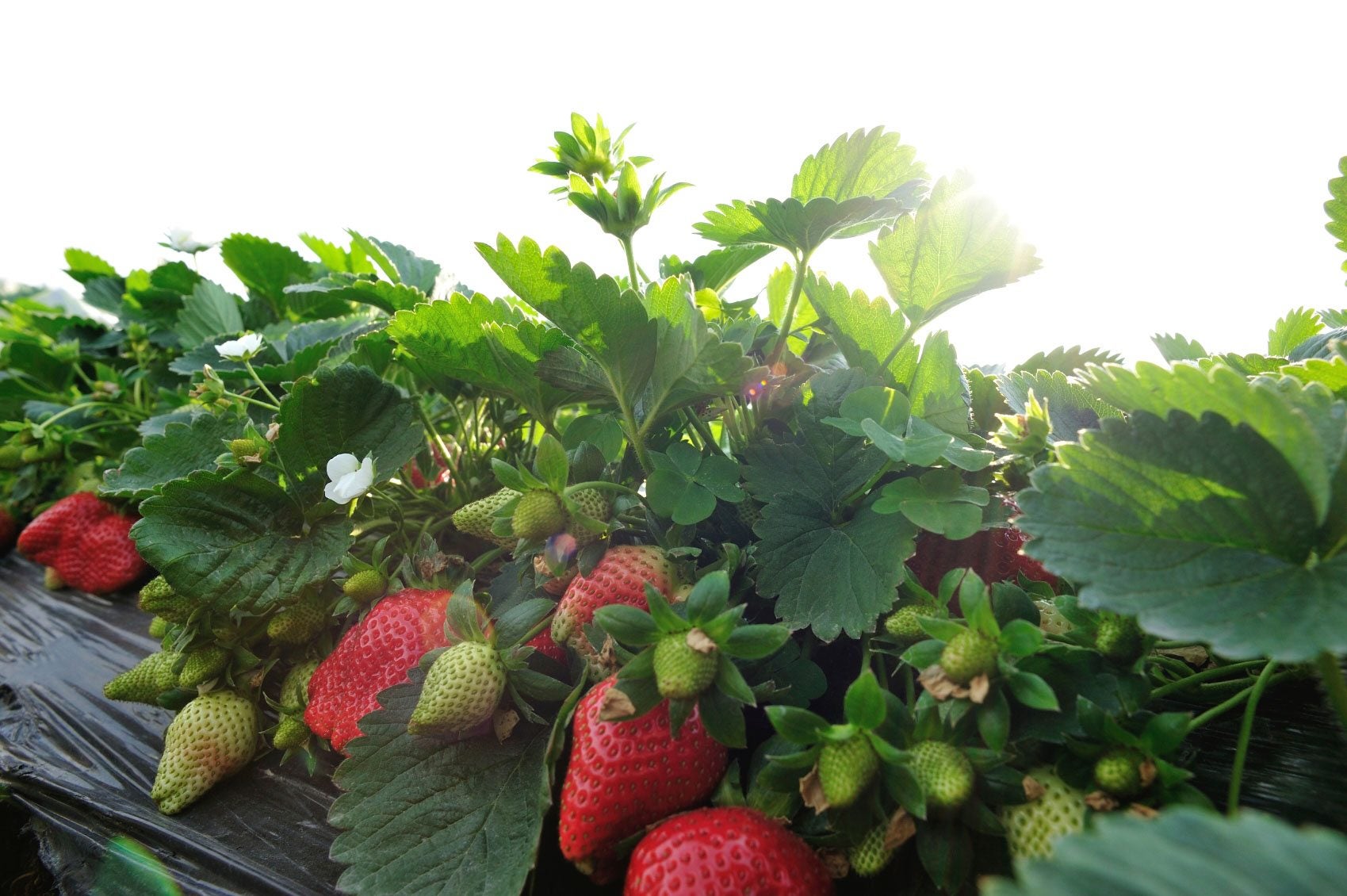Strawberry Growing In Hot Weather: How To Grow Strawberries In High Heat

Easy to grow in moderately temperate climates, there are those of us in hot areas of the country, including desert climates, that yearn for fresh strawberries plucked dewy and sweet from our own backyard. Strawberry growing in hot weather, where the daytime temperatures are more often than not over 85 F. (29 C.) is possible with a bit of preparation and planting at the correct time of year.
How to Grow Strawberries in High Heat
The trick to growing strawberries in hot climates is to have the berries ready for picking in mid-winter, not late spring or early summer as is common in temperate zones. Keep in mind that strawberries take four to five months of growth before they are ripe for harvest and well-established plants are the most prolific producers. So, the question stands, “How to grow strawberries in high heat?” When combining strawberries and hot summer climates, set the new plants late in the summer to allow time to establish during the cooler months so the berries are ripe in midwinter. In the northern hemisphere, that would mean planting starts in September for harvest in January. Strawberries flower and fruit in cool to warm temps (60-80 F. or 16-27 C.), so spring planting of strawberries in hot summer climates is doomed to fail. Strawberries may be hard to come by in late summer, as nurseries do not usually carry them at that time. Therefore, you may need to prevail upon friends or neighbors who have established plants to garner starts. Set the plants in compost-rich, well-draining soil, taking care not to set the crown of the start too high or it may dry out. Water in well and adjust the plants if they settle too much. Set strawberry plants 12 inches (30 cm.) apart to allow the runner to fill in space.
Caring for Strawberries in Hot Conditions
Care of the plants is of vital importance when strawberry growing in hot weather. Keep the soil uniformly moist; if the leaves turn pale green, you are likely overwatering. Twelve inches (30 cm.) of water saturation is sufficient, but then allow the soil to dry for a few days. If you set the plants in lots of compost, there is little likelihood they will need additional fertilizer. If not, use a commercial fertilizer that is rich in potassium and follow the directions to avoid overfeeding. Once the weather cools, cover the bed with portable plastic sheeting about 4-6 mm thick, either set over a frame of half hoops or wire mesh. The berry plants can withstand a couple of nights of frost but no more. Ventilate the covering on warm days by opening the ends and placing a tarp or blanket over it on freezing nights to retain heat. During the harvesting months of mid-winter to late spring, spread straw around the plants to keep the forming berries clean, allow air circulation and retain water. Pick your strawberry bounty when the berries are uniformly red but not soft. If the berries are a bit white at the end, pick them anyway since they will continue to ripen for a few days once picked. In the summer when temps soar, it is a good idea to shade the strawberry patch to prevent drying out or burning of foliage. Simply replace the plastic sheeting with 65 percent shade cloth, cover with straw or even build a fence or plant other plants nearby that will shade the berries. Maintain a watering schedule and allow drying between watering.
Final Note on Strawberry Growing in Hot Weather
Lastly, when attempting to grow strawberries where temperatures climb, you can try growing the berries in a container. Be sure to select a container that is deep enough for the roots (12-15 inches or 30.5-38 cm.), water regularly, and feed each week with high potassium, low nitrogen fertilizer once they begin to flower. Planting in containers allows control over sun exposure and temperature, allowing you to freely move the plants to more sheltered locations.
Sign up for the Gardening Know How newsletter today and receive a free copy of our e-book "How to Grow Delicious Tomatoes".

Amy Grant has been gardening for 30 years and writing for 15. A professional chef and caterer, Amy's area of expertise is culinary gardening.
